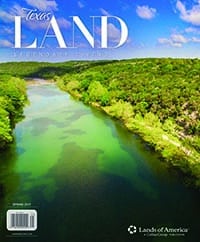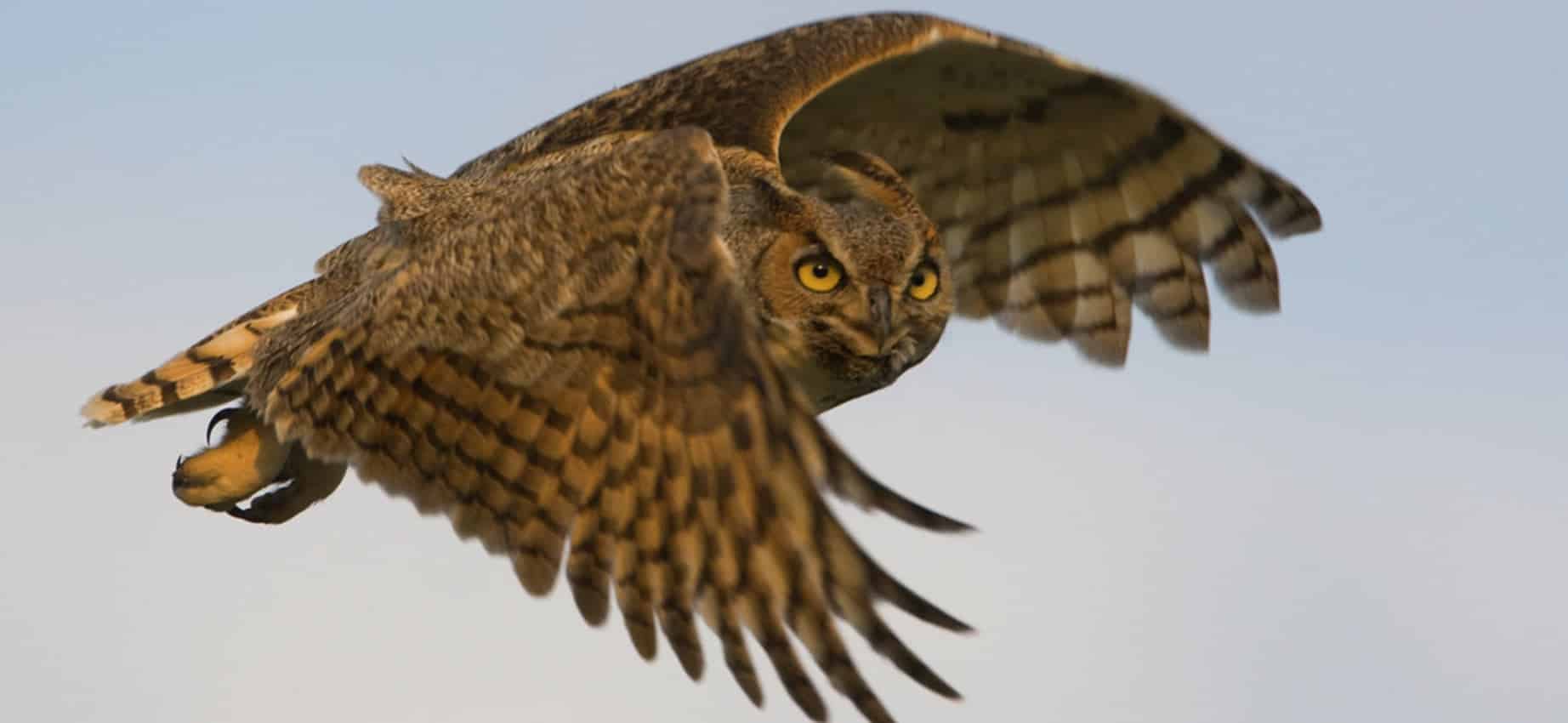For the past 15 years, Larry Ditto has been a full-time nature photographer, a pursuit he has been engaged in for more than 40 years. Prior to becoming a full-time photographer, Ditto put his wildlife science degree from Texas A&M to work as a refuge manager in the U.S. Fish and Wildlife Service’s National Wildlife Refuge System. He has focused his camera primarily on South Texas, but has shot extensively in the West and Midwest.
His work is featured in books such as Texas: A Photographic Journey and magazines such as Texas Parks & Wildlife, Texas Highways and Bird Watcher’s Digest. In 2000, he along with Greg Lasley won the
prestigious Valley Land Fund Wildlife Photo Contest.
According to Ditto, his science background has given him an advantage as both a photographer and a leader/instructor at the nature photography workshops and instructional photo tours he hosts each year. In addition, he judges various photography contests and lectures at nature festivals across Texas.
I caught him on the fly, so to speak, and got his perspective on nature photography destinations.
As a photographer, what makes a good nature photography destination?
For me, a good nature photography destination is one with lots of accessible and approachable wildlife, especially birds. Most of us who do this are at the age where “accessible” means we can drive close or only have to walk a short distance to get the photos. We all have way too much gear, so that tends to hold us back from climbing to the mountain tops, although that can be wonderful, too.
Ranches, parks and wildlands with unusual animals and birds really attract photographers because we are all looking for that shot that no one else has-or that critter that few photographers get to see in a view finder. This is why South Texas ranches are so successful as photo destinations. They have green jays, great kiskadees, Audubon’s orioles, and many other species that are unusual, colorful and fun to photograph. In the Hill Country, a ranch with golden-cheeked warblers and black-capped vireos tends to be more attractive that other Central Texas locations that have the more typical, widespread birds. Landscape is important as well. Backgrounds are a critical component of most good nature photos, so a nice earth-tone background is desirable.
Beyond that, photographers will be more successful if there is good habitat around the area where we are looking for wildlife: where there is good, varied habitat there is a lot of wildlife. Of course, that is more of a land management maxim than a photography issue.
From an infrastructure perspective, what do photographers want and need?
I think most photographers prefer areas with little human disturbance because part of nature photography is enjoying the landscape, the solitude, the nature sounds and the rest. Being immersed in nature makes the trip worthwhile, even when we aren’t successful in getting all the images we’d like to capture.
Now, highway access, ranch roads and relatively comfortable and effective photo blinds are critical, too. Many photographers fly in for a few days of shooting, so they often rent small cars that aren’t really designed for rough, rocky roads.
Most traveling photographers really appreciate a good map provided by the landowner. A good map and good roads gives them a lot of security, which they need. Remember, most of these photographers are urbanites and they’re not used to being out in the “wild” country.
If photographers visit ranches and parks without a leader, then they need a ranch guide or very good signage and orientation from rancher or printed literature. Always remember, the photographers are going to be happiest when they know where they are, know they are safe from the elements and the critters.
Ranches, parks and wildlands with unusual animals and birds really attract photographers because we are all looking for that shot that no one else has—or that critter that few photographers get to see in a view finder. – Larry Ditto
A landowner can’t afford to cut corners on blind design, comfort, and site planning. Photographers need places where the animals will gather early and late in the day and these places need to be oriented so that nice, warm sunlight comes over the blind and bathes the animals in yellow and orange light just after sunrise and before sunset.
Accommodations for sleeping, eating and workshop discussions are very important to photographers and workshop leaders. Most of us hate having driving back and forth to a town 40 miles from the ranch. I think you will find most of the successful photo ranches have these amenities and the photographers are more than willing to pay reasonable fees for these items.
As a teacher/workshop leader, what makes a good nature photography destination? Are there different requirements for beginning students versus advanced students?
We covered a lot of this in the previous question, but needs do vary a little between beginners and “old hands.” However, the leaders usually accommodate this in planning for the trip. I find that beginners and older photographers really prefer shooting from the stability and comfort of a blind. Younger, active photographers are happy to walk a little and negotiate some reasonably rough terrain if they can get the subjects they came for.
A meeting room with tables and a lot of electrical outlets provide good places to share information and instruction while giving the photographers/students a place to plug in their computers and work on their images while recharging camera batteries.
As both a photographer and workshop leader, what advice would give to a landowner who might be considering adding nature photography to their ranch as a potential revenue source?
Ranchers considering adding photography to their operation need to, well actually must, get the advice of a good, professional photographer who understands Texas wildlife and habitats and who is aware of what it takes to lure wildlife and to create photogenic settings for photographers.
For instance, when I do ranch consultations, I show the owner where to locate blinds, what brush to chop and what brush to keep, where to put water and feed, and how to maintain the site to keep it attractive to wildlife and photogenic. The landowners get information on how to build blinds, what kinds of feeders and feeds work best for birds and other animals. I recommend the kinds of chairs that are most functional in photo blinds, how to properly camouflage and design the blind for safety, weather proofing, temperature and how to make it easy to get those big lenses set up for wildlife photography.
In addition, I’ll address issues like designing the blind to take advantage of natural lighting in the fall, winter and spring-and maybe even summer. Light availability and proper direction are paramount. Those landowners who successfully host nature photographers are usually people who enjoy photography themselves. Some aspect of this business will require the owners or their employees to do something five – seven days/week. They have to let photographers in and out the front gate, feed them, house them, fix an occasional flat, provide phone service and/or WiFi, keep water and feed at each blind every day, keep the blinds clean, trees along the road must be trimmed so limbs don’t scratch
customers’ car doors, and much more of that sort of thing.
It is also critical that the owner appreciate the value of having reptiles, predators and such, as well as birds, if they want to succeed. Killing every coyote, bobcat and rattlesnake usually runs against the grain of what photo ranches are about.
When you host a photography workshop on a private ranch, what do you provide and what does the landowner provide? In other words, what is the division of labor for an event?
When I take a group to a ranch, I usually make reservations with the owners for meals, rooms, blinds and the other “baseline needs,” which keeps the owners from having to deal with a bunch of photographers who really aren’t sure of what they will need. I work out the costs with the owners, add my fee and pass that total along to the photographers.
I try to visit each site before taking groups to the ranch so I know what to expect. Then, I can help the owners fine tune things to accommodate most situations.
I provide guide service and photo instruction. Many ranch owners like to assist me with getting people into the blinds and preparing the photo set so it lures the most animals and is as photogenic as possible. For instance, Larry Jay at Block Creek Natural Area near Comfort drives us to the blinds, puts out the feed, water and colorful flowers for background color. I tweak the blind and setup when we arrive at a blind.
Once we get the group situated, the owner leaves and I stay and shoot with the photographers. I’m on-site to take care of problems, help them get their camera gear working correctly and handle anything else on the photography end.
In your opinion, what makes nature photography such a powerful force for conservation?
Nature photography puts the ordinary people and voters in direct contact with ranch owners and managers where they educate each other about personal needs and perspectives. While photographers give the landowners another revenue source, their interaction helps both appreciate the viewpoints of the other.
Many owners are kind of “blown away” to learn about many critters on their land that they’ve never seen. They learn firsthand just how important every plant type of plant and wildlife species is to the general public. Ranchers get a charge out of hearing and seeing how valuable their life’s work has been and will be to the non-ranch public.
In a nutshell, nature photographers validate the land manager’s values and sense of importance. Where these folks meet, it’s an educational experience for all and everyone leaves feeling fulfilled and with a better understanding of and appreciation for natural things.
Many lasting friendships are forged in the nature photography settings. Owners are a lot more likely to see their roles in a different light. I dare say that after encountering the passionate respect of nature photographers, many landowners have-and will-alter their ranch management activities to further improve the quality of the habitat, soil, water, and animals, which in turn improves it for humans.

This article appears in the spring 2017 issue of Texas LAND magazine. CLICK HERE to read more and subscribe to future issues.
